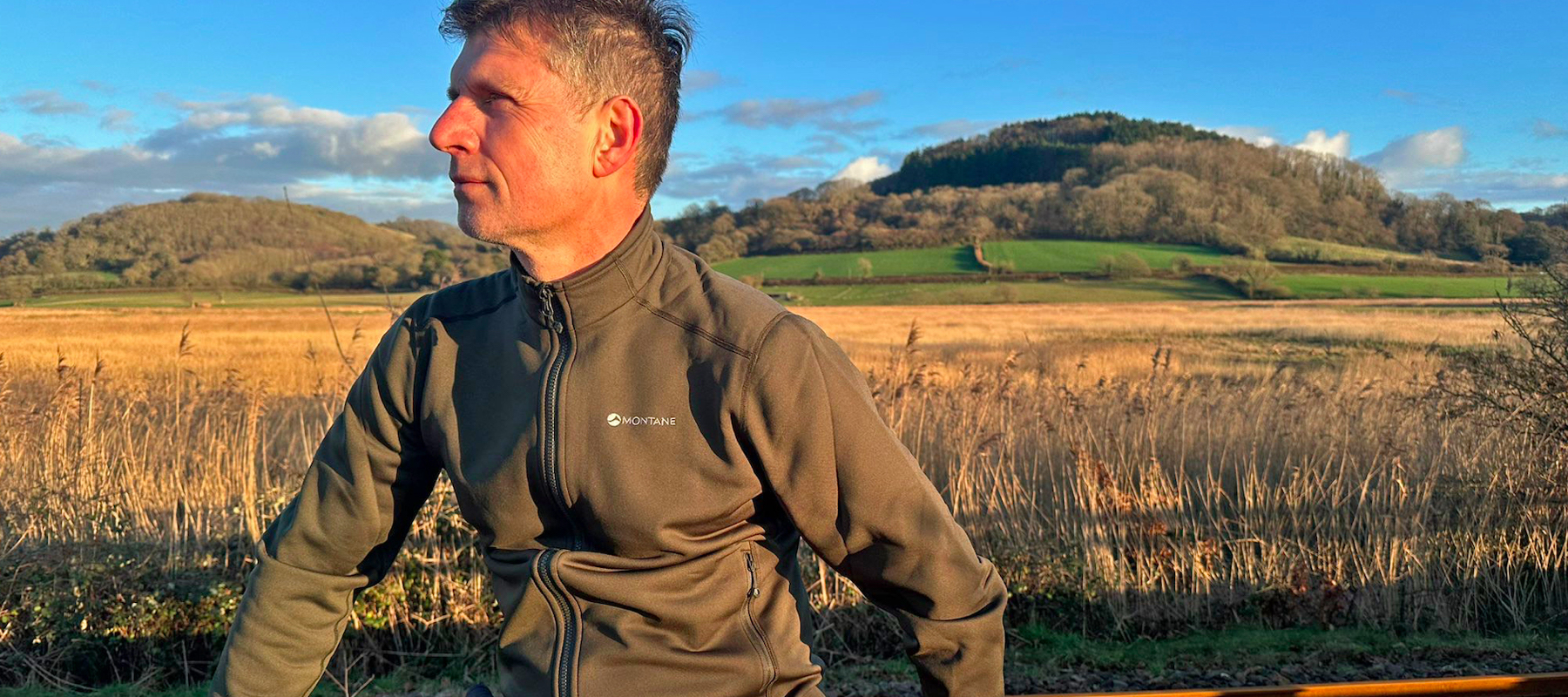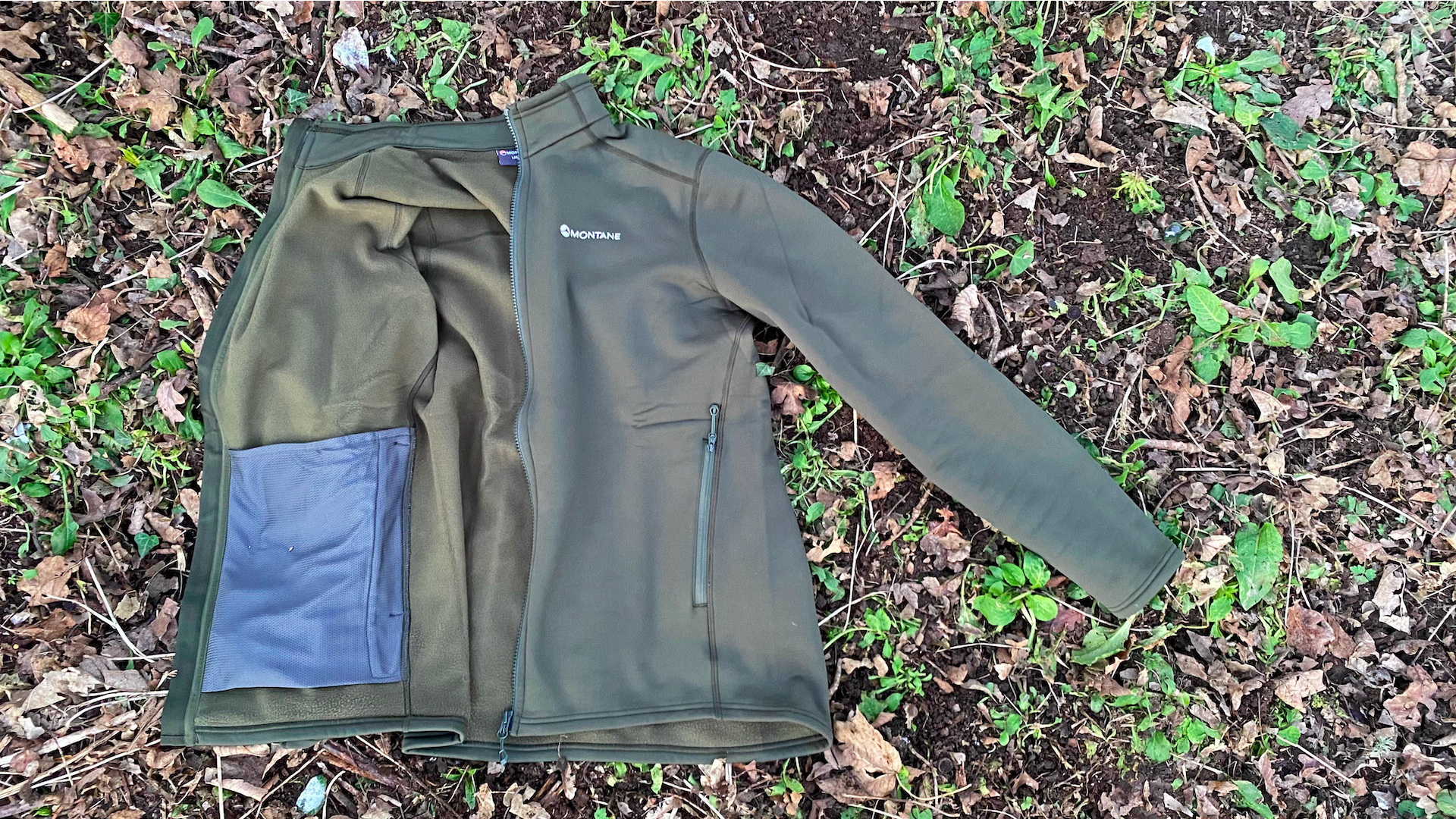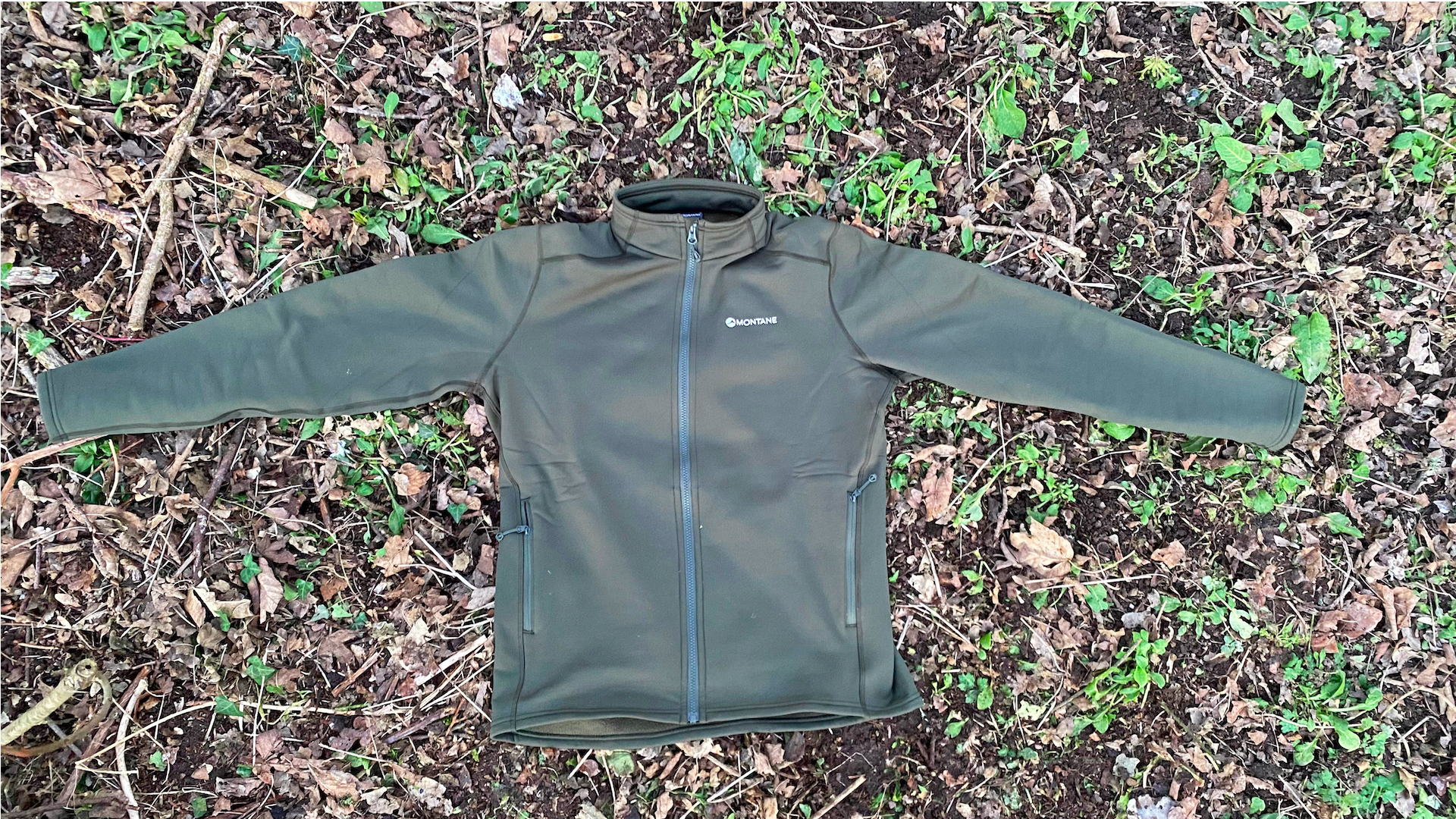
Meet the reviewer
Montane Fury Fleece: first impressions
The Montane Fury Fleece Jacket is available in various versions, including a good-looking hoody ($145 / £120) and a pull-on ($125 / £95) with a quarter-length zip, but I’ve been testing the full-zip Fury with no hood. Personally, I quite like a mid layer without a hood, a feature I find often simply gets in the way or sticks out the top of an outer shell and gets wet in the rain, but it’s a subjective thing, and it’s nice to have a choice.
• List price: $130 (US) / £100 (UK)
• Fabric: Polyester (51%), Nylon (39%), Elastane (10%)
• Gender availability: Full-zip version only available for men
• Sizes: S-XXL
• Weight (large): 340g /12oz
• Colors: Black / Oak Green
• Best for: Walking, hiking, trekking, scrambling, climbing, snow sports
The full-zip, sans-hood Fury is only available for men (and only in two colors), but the other styles come in both men’s and women’s versions, and in a wider range of hues (some a lot more vibrant than Oak Green and Black). The pull-on Fury is marginally cheaper than the full-zip and hooded version, and features an additional pocket on the chest; overall this is arguably the best style when you’re out on the trails and at the crag (other than making it marginally easier to put on and take off, I can’t see any enormous benefits to having a full-length zip – but again, it’s a personal preference).
The first thing to note about this family of fleeces – new from Montane this season – is that they boast a huge amount of stretch. The four-way flex in the dynamic ‘Thermo Stretch’ fabric means you can wear these tops for all sorts of high-energy activities in the outdoors – from hiking, biking, hill walking and fastpacking through to ski touring, scrambling and rock climbing – without your movement being impeded at all. The design and mixture of materials used in the construction of this garment also equip all of these tops with excellent breathability and superb moisture management capabilities.
So far, so good, but is the Fury really a fleece jacket at all? The answer to that depends on how strict your definition is of what counts as a real fleece. While the Fury has a brushed-back polyester inner, the smooth-finish nylon outer gives it more of a softshell finish than a traditional fleece. This in itself isn’t a negative, but unlike most fleeces, there doesn’t appear to be any recycled material content in the Fury, which makes me a tad furious (there’s no excuse for brands not to be using recycled polyester these days – so Montane need to up their game).
Montane Fury Fleece: on the trails

I’ve been walking, hiking and cycling in the full-zip Fury fleece top for the past month, in the hills, woods, wilds and wetlands of Devon, during a soggy December and a suddenly freezing January. And I have to say, as disappointing as the lack of recycled material is, as a technical garment it performs really well.
The brushed-back polyester inner has a warm next-to-skin feel (complemented by comfortable low-profile seams) and being hydrophobic it directs moisture away from your body very effectively. Meanwhile the denser hydrophilic nylon outer dissipates the dampness, which ultimately evaporates. Furthermore, the density of the outer finish makes it more windproof than fluffier fleeces, and also means it should be a bit more durable and less prone to piling (time will tell).

With its excellent stretchiness and advanced breathability, the Fury works as a good-looking outer layer in dry weather, fending off windchill and dealing with sweat and moisture that builds up on the inside when you’re working hard in the outdoors, climbing hills and powering around trails.
A midweight top, it doesn’t supply a huge amount of warmth, but it’s definitely designed for active use, not for standing around in cold campsites – just be aware that if you’re wearing it while climbing in late fall, winter or early spring, by the time you’re on belay in the shade, you might need another layer. On the upside, being made entirely from synthetics it will continue to provide some warmth even when wet.
That said, it’s not rain repellent and works much better when dry, so in wet weather you will need to wear a good waterproof shell layer on top. The body-hugging, performance-orientated fit means it works well as a mid layer – albeit one with modest thermal properties. Unfortunately the Fury lacks thumb loops, but the cuffs are elasticated, so they don’t easily ride up your arms when you pull on an overlayer.

The high neck, which is also gently elasticated, keeps chilly breezes at bay, and the back panel does extend down over the top of your bum, but not quite as much as some other fleeces – another inch or two would be preferable to really keep drafts out and to stop the top riding up when you’re wearing a backpack.
There are two zipped hand pockets on all the Fury tops, but only the pull-on version has the chest pocket; it would have been a welcome addition to the full-zip and hooded iterations of the top in my opinion.
The Montane Fury Top is a relatively expensive garment in fleece terms, but it’s cheaper than many softshells. The design is decent, though, and the material and components, including YKK reverse coil zips, are excellent quality, and I think these tops will last for many years of active service (although, if you’re regularly wearing one while working up a sweat ascending peaks and charging along trails, some odor buildup might occur around the pits, because there’s no evidence of microbial treatment in the materials).








